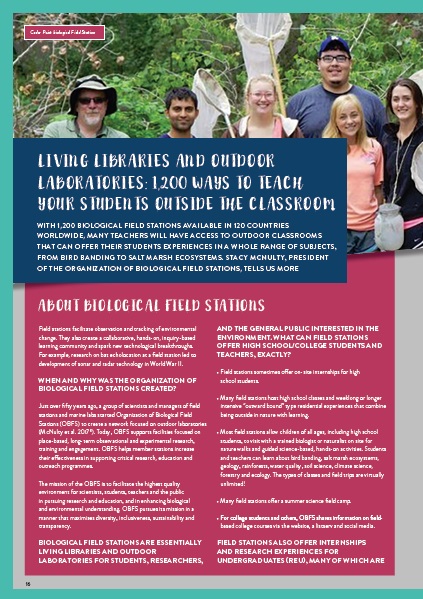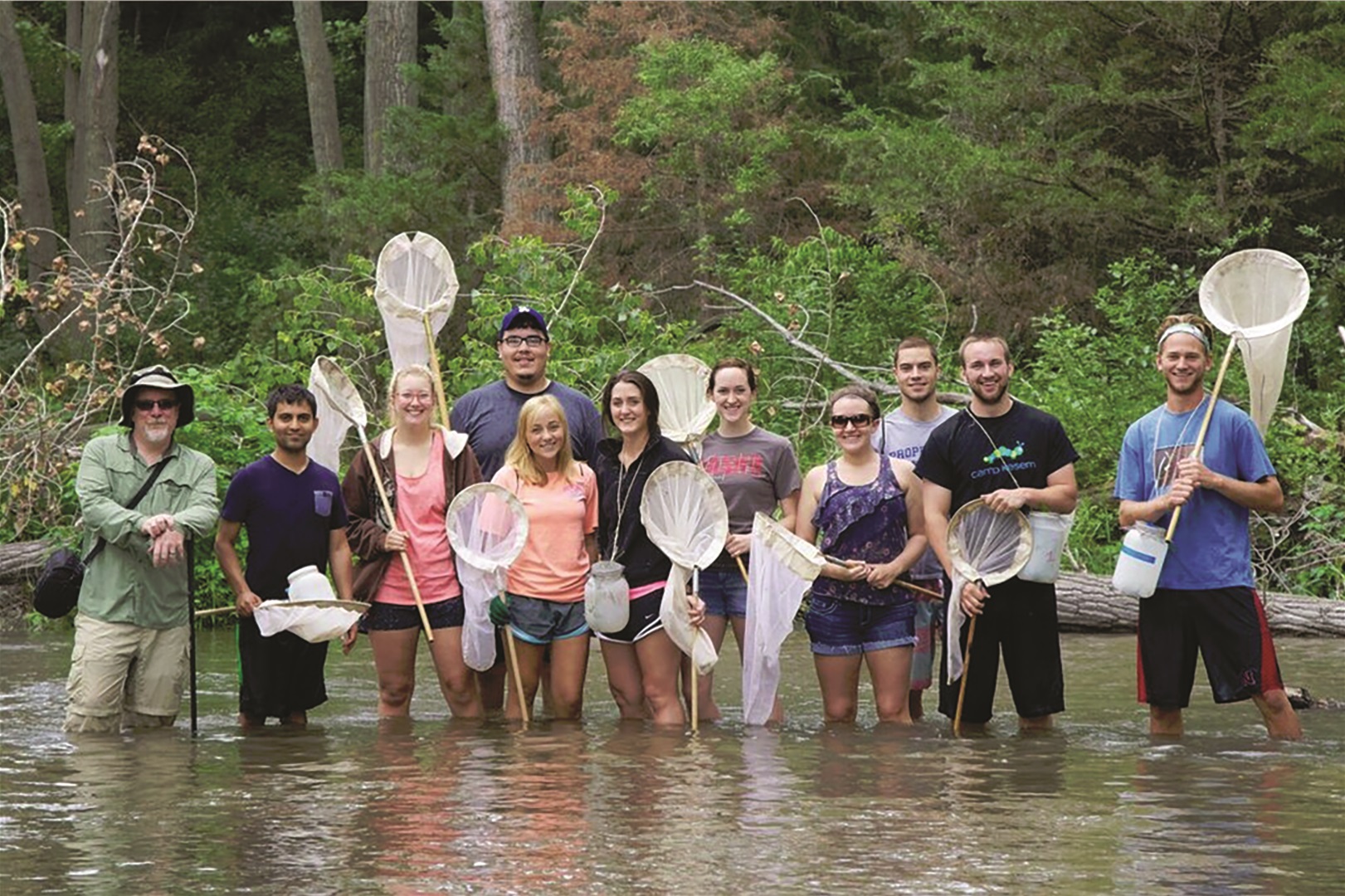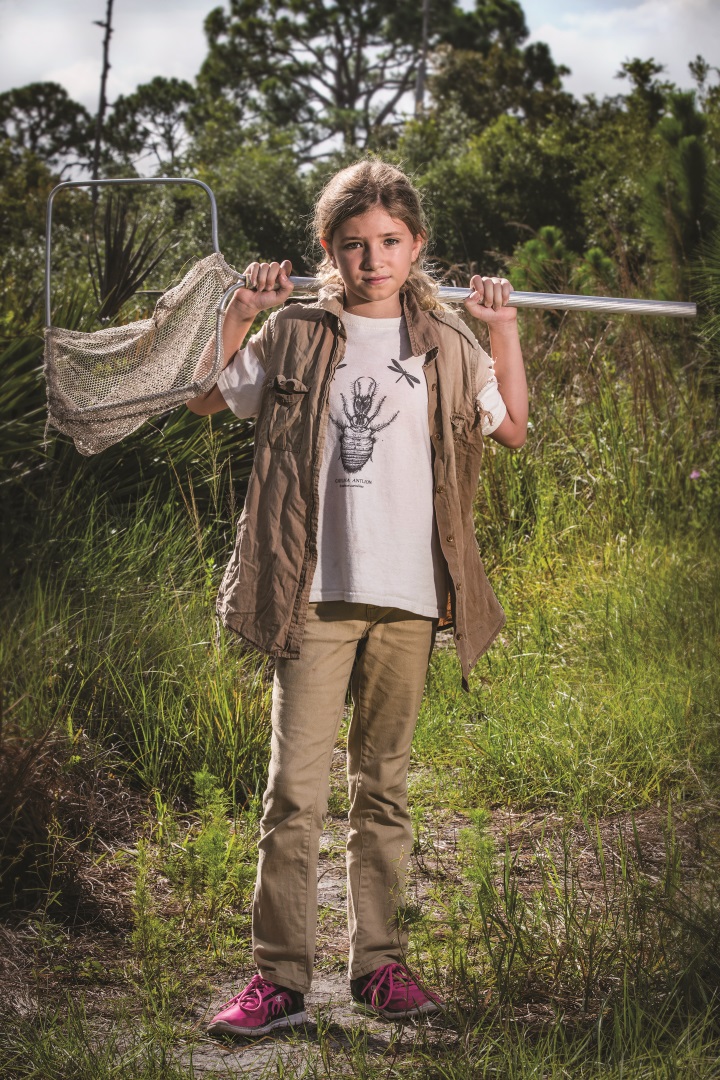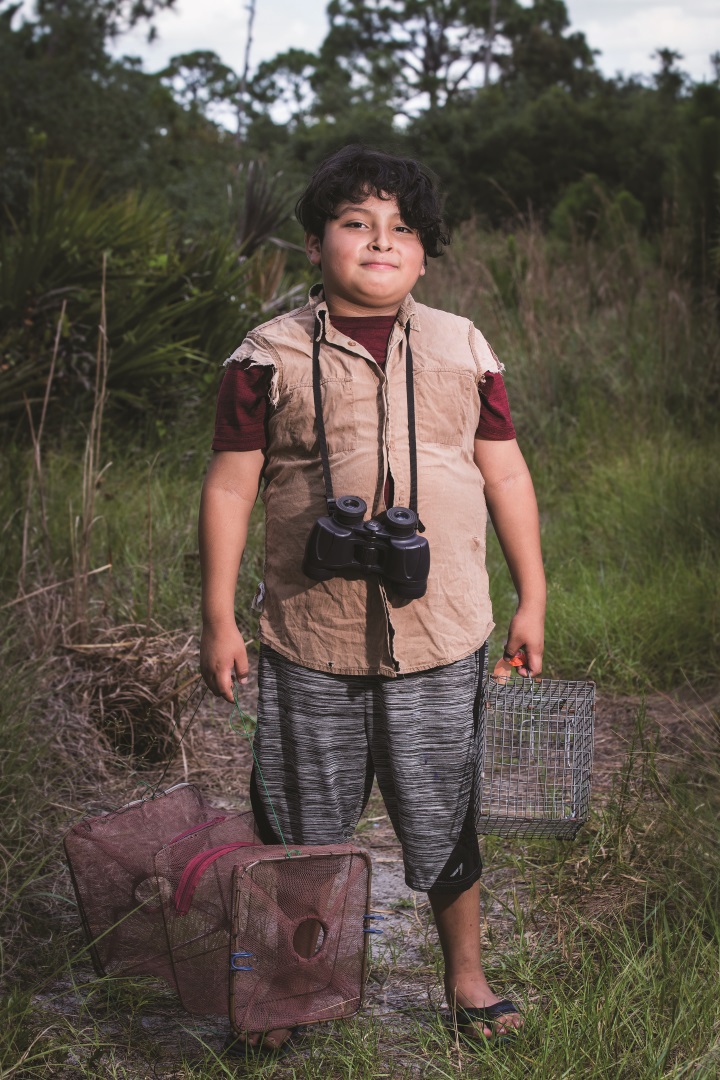Living libraries and outdoor laboratories: 1,200 ways to teach your students outside the classroom
With 1,200 biological field stations available in 120 countries worldwide, many teachers will have access to outdoor classrooms that can offer their students experiences in a whole range of subjects, from bird banding to salt marsh ecosystems. Stacy McNulty, President of the Organization of Biological Field Stations, tells us more
Field stations facilitate observation and tracking of environmental change. They also create a collaborative, hands-on, inquiry-based learning community and spark new technological breakthroughs. For example, research on bat echolocation at a field station led to development of sonar and radar technology in World War II.
WHEN AND WHY WAS THE ORGANIZATION OF BIOLOGICAL FIELD STATIONS CREATED?
Just over fifty years ago, a group of scientists and managers of field stations and marine labs started Organization of Biological Field Stations (OBFS) to create a network focused on outdoor laboratories (McNulty et al. 2017*). Today, OBFS supports facilities focused on place-based, long-term observational and experimental research, training and engagement. OBFS helps member stations increase their effectiveness in supporting critical research, education and outreach programmes.
The mission of the OBFS is to facilitate the highest quality environment for scientists, students, teachers and the public in pursuing research and education, and in enhancing biological and environmental understanding. OBFS pursues its mission in a manner that maximises diversity, inclusiveness, sustainability and transparency.
BIOLOGICAL FIELD STATIONS ARE ESSENTIALLY LIVING LIBRARIES AND OUTDOOR LABORATORIES FOR STUDENTS, RESEARCHERS, AND THE GENERAL PUBLIC INTERESTED IN THE ENVIRONMENT. WHAT CAN FIELD STATIONS OFFER HIGH SCHOOL/COLLEGE STUDENTS AND TEACHERS, EXACTLY?
- Field stations sometimes offer on-site internships for high school students.
- Many field stations host high school classes and weeklong or longer intensive “outward bound” type residential experiences that combine being outside in nature with learning.
- Most field stations allow children of all ages, including high school students, to visit with a trained biologist or naturalist on site for nature walks and guided science-based, hands-on activities. Students and teachers can learn about bird banding, salt marsh ecosystems, geology, rainforests, water quality, soil science, climate science, forestry and ecology. The types of classes and field trips are virtually unlimited!
- Many field stations offer a summer science field camp.
- For college students and others, OBFS shares information on field-based college courses via the website, a listserv and social media.
FIELD STATIONS ALSO OFFER INTERNSHIPS AND RESEARCH EXPERIENCES FOR UNDERGRADUATES (REU), MANY OF WHICH ARE PAID. DO STUDENTS HAVE TO FIT A CERTAIN PROFILE? AND HOW COMPETITIVE ARE THESE INTERNSHIPS AND REUs?
There is no single profile to meet when beginning to volunteer at a field station. Students just need the willingness to learn and the ability to commit time to a project. Field stations encourage a wide variety of students to apply. Those with experience and knowledge will have a greater chance of being accepted on a particular internship or REU. The best way to build your résumé is through learned experiences and growing your network of colleagues. Every person you meet may lead you to a new opportunity or life-path. Most internships are very competitive and typically one position can have 20 applicants or more. REUs are also very competitive.
This slide show does an excellent job of explaining how to prepare for an REU: https://archive.education.mrsec.wisc.edu/research/slides/greenberg_REU_slides.pdf
This article explains some issues revolving around REUs: https://smallpondscience.com/2018/03/27/competition-for-the-best-reu-applicants-is-outrageous/
Here is a webinar explaining how to apply for REUs: https://geosciencewomen.org/wp-content/uploads/Applying-for-REUs.mp4
HOW DO STUDENTS, TEACHERS AND SCHOOLS CONTACT OR GET INVOLVED WITH A FIELD STATION?
Each field station typically has contact information on their webpage, which is available to both teachers and students. For fastest results email the director or the person in charge of education for the site.
Cedar Point Biological Field Station
Eve camped at the Archbold Biological Field Station. © Dustin Angell
Cristian also camped at the Archbold Biological Station in the USA. © Dustin Angell
Katherine Arquez, an intern at Archbold Biological Field Station, USA © Dustin Angell
Field stations facilitate observation and tracking of environmental change. They also create a collaborative, hands-on, inquiry-based learning community and spark new technological breakthroughs. For example, research on bat echolocation at a field station led to development of sonar and radar technology in World War II.
WHEN AND WHY WAS THE ORGANIZATION OF BIOLOGICAL FIELD STATIONS CREATED?
Just over fifty years ago, a group of scientists and managers of field stations and marine labs started Organization of Biological Field Stations (OBFS) to create a network focused on outdoor laboratories (McNulty et al. 2017*). Today, OBFS supports facilities focused on place-based, long-term observational and experimental research, training and engagement. OBFS helps member stations increase their effectiveness in supporting critical research, education and outreach programmes.
The mission of the OBFS is to facilitate the highest quality environment for scientists, students, teachers and the public in pursuing research and education, and in enhancing biological and environmental understanding. OBFS pursues its mission in a manner that maximises diversity, inclusiveness, sustainability and transparency.
BIOLOGICAL FIELD STATIONS ARE ESSENTIALLY LIVING LIBRARIES AND OUTDOOR LABORATORIES FOR STUDENTS, RESEARCHERS, AND THE GENERAL PUBLIC INTERESTED IN THE ENVIRONMENT. WHAT CAN FIELD STATIONS OFFER HIGH SCHOOL/COLLEGE STUDENTS AND TEACHERS, EXACTLY?
- Field stations sometimes offer on-site internships for high school students.
- Many field stations host high school classes and weeklong or longer intensive “outward bound” type residential experiences that combine being outside in nature with learning.
- Most field stations allow children of all ages, including high school students, to visit with a trained biologist or naturalist on site for nature walks and guided science-based, hands-on activities. Students and teachers can learn about bird banding, salt marsh ecosystems, geology, rainforests, water quality, soil science, climate science, forestry and ecology. The types of classes and field trips are virtually unlimited!
- Many field stations offer a summer science field camp.
- For college students and others, OBFS shares information on field-based college courses via the website, a listserv and social media.
FIELD STATIONS ALSO OFFER INTERNSHIPS AND RESEARCH EXPERIENCES FOR UNDERGRADUATES (REU), MANY OF WHICH ARE PAID. DO STUDENTS HAVE TO FIT A CERTAIN PROFILE? AND HOW COMPETITIVE ARE THESE INTERNSHIPS AND REUs?
There is no single profile to meet when beginning to volunteer at a field station. Students just need the willingness to learn and the ability to commit time to a project. Field stations encourage a wide variety of students to apply. Those with experience and knowledge will have a greater chance of being accepted on a particular internship or REU. The best way to build your résumé is through learned experiences and growing your network of colleagues. Every person you meet may lead you to a new opportunity or life-path. Most internships are very competitive and typically one position can have 20 applicants or more. REUs are also very competitive.
This slide show does an excellent job of explaining how to prepare for an REU: https://archive.education.mrsec.wisc.edu/research/slides/greenberg_REU_slides.pdf
This article explains some issues revolving around REUs: https://smallpondscience.com/2018/03/27/competition-for-the-best-reuapplicants-is-outrageous/
Here is a webinar explaining how to apply for REUs: https://geosciencewomen.org/wp-content/uploads/Applying-for-REUs.mp4
HOW DO STUDENTS, TEACHERS AND SCHOOLS CONTACT OR GET INVOLVED WITH A FIELD STATION?
Each field station typically has contact information on their webpage, which is available to both teachers and students. For fastest results email the director or the person in charge of education for the site.
THE OBFS HAS A DIRECTORY OF BIOLOGICAL FIELD STATIONS AND A MAP, ENABLING THE PUBLIC TO FIND A FIELD STATION NEAR THEM. THERE ARE LOTS OF FIELD STATIONS IN THE US BUT NOT SO MANY ELSEWHERE IN THE WORLD. DOES THE OBFS HAVE RESOURCES FOR YOUNG PEOPLE WHO DON’T HAVE ACCESS TO A FIELD STATION NEARBY?
A recent publication by Tydecks et al. (2016) identified over 1,200 field stations worldwide in 120 countries. Also, public parks and nature preserves, nature centres and other facilities may have opportunity for research and field experiences. If people do not have access to a field station or marine lab, they can start by visiting/emailing professors from local colleges and universities. Students may find a professor or graduate student to volunteer with based on their own interests by contacting the continuing education or outreach office.
WHAT DO STUDENTS, WHO AREN’T NECESSARILY SCIENTIFICALLY MINDED, GET OUT OF A VISIT TO A FIELD STATION?
Field stations are living classrooms across multiple disciplinary areas and can provide experiences and learning for all ages. Fields include but are not limited to ecology, geology, marine biology, history and the arts. Students typically receive mentored, independent research experience in a collaborative, supportive environment. They also learn skills such as orienteering (map and compass), use of equipment such as GPS units and sensors, species identification, operation of boats and equipment, teambuilding and many other skills.
* McNulty, S. A., D. White, M. Hufty, and P. Foster. 2017. The Organization of Biological Field Stations at Fifty. The Bulletin of the Ecological Society of America 98:359–373. https://doi.org/10.1002/bes2.1349
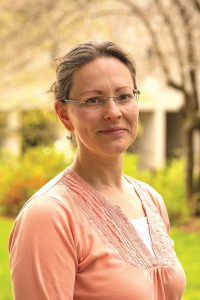 ABOUT STACY MCNULTY
ABOUT STACY MCNULTY
CURRENT PRESIDENT OF THE ORGANIZATION OF BIOLOGICAL FIELD STATIONS
YOU ARE AN ECOLOGIST BY TRAINING. WHAT SORTS OF THINGS DO YOU DO?
I look for patterns and relationships between species and between animals and their habitats. I also document trends over time and seasonal changes (the study of phenology includes animal migration, flowering, autumn leaf colour in deciduous trees and more). Field stations are often places where we document these long-term fluctuations.
For example, at the SUNY ESF Adirondack Ecological Center in the mountains of New York (http://www.esf.edu/newcomb), we have documented a loss of three weeks of lake ice cover in the past forty years. The data show winter is now shorter than the eighty-year average due to changes in the regional climate. Shorter winters can affect water temperature and oxygen needed by trout and cold-water fish, a lack of snow exposes plant roots to freezing, and warmer temperatures mean ticks and pathogens may be active for longer periods of the year, causing problems for humans, lengthening the growing season for plants, and affecting ecosystem functions such as nutrient cycling and storage of carbon.
WHAT DO YOU LOVE ABOUT YOUR JOB AS AN ECOLOGIST?
I love that there are always questions to ask about how the Earth’s systems work. I also enjoy documenting seasonal changes, such as birds singing in the summer or tracking mammals in winter. From a tiny moss community to a bull moose calling to a mate, there is always something to see or hear – and it’s great fun to share those discoveries with students!
WHY ARE YOU PASSIONATE ABOUT SCIENCE AND ENVIRONMENTAL EDUCATION?
As a child, I was always climbing trees, building rock dams in streams, using my father’s microscope from his high school biology classroom to look at pond water, and asking “why?” I had access to open spaces and the ability to explore my neighbourhood, but many children today may not have that access (see Richard Louv’s book Last Child in the Woods). Interacting with the complex physical world helps us learn problem solving, engages our brain and all of our senses, and can result in new ways of thinking.
Now, each spring on a rainy evening, families walk with me to see the salamanders moving into their breeding wetlands. The children’s expression of joy when they spot these secretive creatures matches my own, because we are discovering the world together!
WHAT ARE YOUR TOP TIPS FOR STUDENTS WHO ARE INTERESTED IN THE ENVIRONMENTAL/BIOLOGICAL SCIENCES?
Find a mentor working in the field of your interest. Introduce yourself and start volunteering/learning. These experiences can provide a pipeline of opportunities in other labs and fields, as well as technician positions and graduate programmes. Explore the world! Read about the topic you’re interested in. Take a summer course at a local college. Do a project that enables you to learn more about the natural resource field. Your teachers, counsellors and others may have suggestions.
GET INVOLVED!
To learn more about the Organization of Biological Field Stations (OBFS), visit the website: https://www.obfs.org/
To find a biological field station near you, check out the OBFS map: https://obfst.memberclicks.net/station-map
There is also a directory of field stations: https://obfst.memberclicks.net/directories#/

